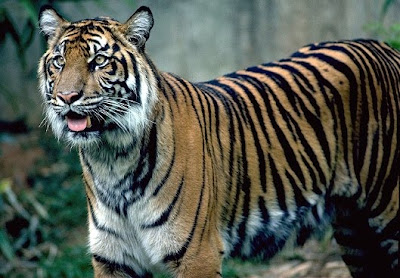
If the lion is truly the king of the jungle, then the TIGER must surely be the EMPEROR OF THE FOREST.
Over the past 100 years wild tiger numbers have fallen by 95%. According to WWF the tiger could be extinct by the year 2022.
The Bali, Caspian and Javan tigers have already become extinct. The 6 remaining species of tigers are: Amur, Bengal, Indochinese, Malayan, South China and Sumatran.
Tigers are still living in Bangladesh, Bhutan, Cambodia, China, India, Indonesia, Laos, Malaysia, Myanmar, Nepal, North Korea, Russia, Thailand and Vietnam.

In China there are only about 50 tigers left.
There are more captive tigers in the US than
there are wild tigers throughout the rest of the world.
Poaching, loss of habitat, and climate change are all driving tigers to the brink.
Today they are being forced to survive on 40% less land than they occupied at the turn of the century.
Let's really make this the year of the tiger by doing all we can to protect tigers from illegal trade and the further destruction of their habitats for the sake of economic development.
Palm oil monoculture is currently destroying the last few remaining tiger habitats in Malaysia and Indonesia.
Visit the WWF website for more information on tigers and to sign a petition urging US leaders to protect captive tigers.
If you live in Malaysia check out the Tx2 Tiger Campaign
You can also check out the WWF interactive map of the top 10 tiger trouble spots
by clicking here.



